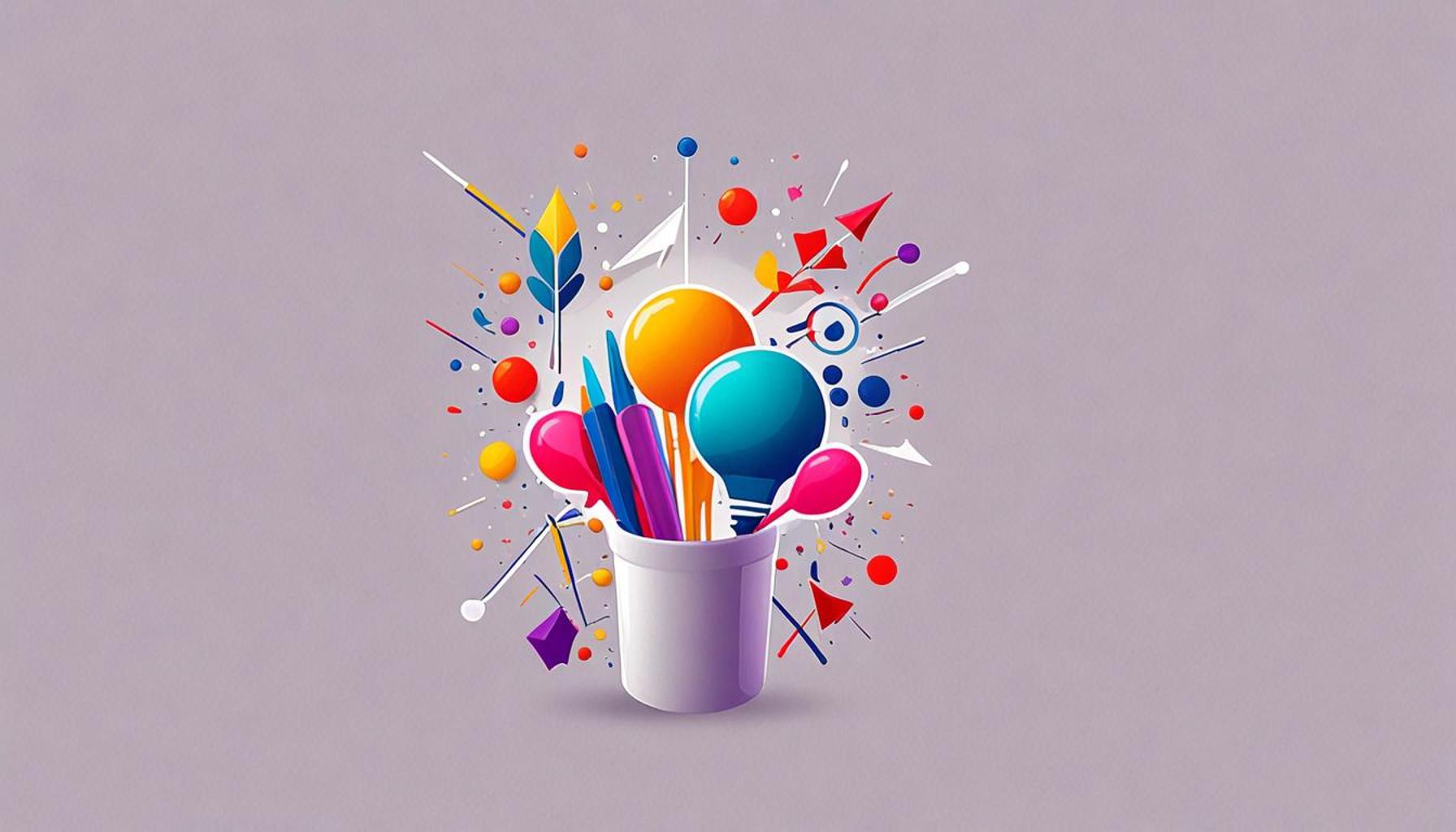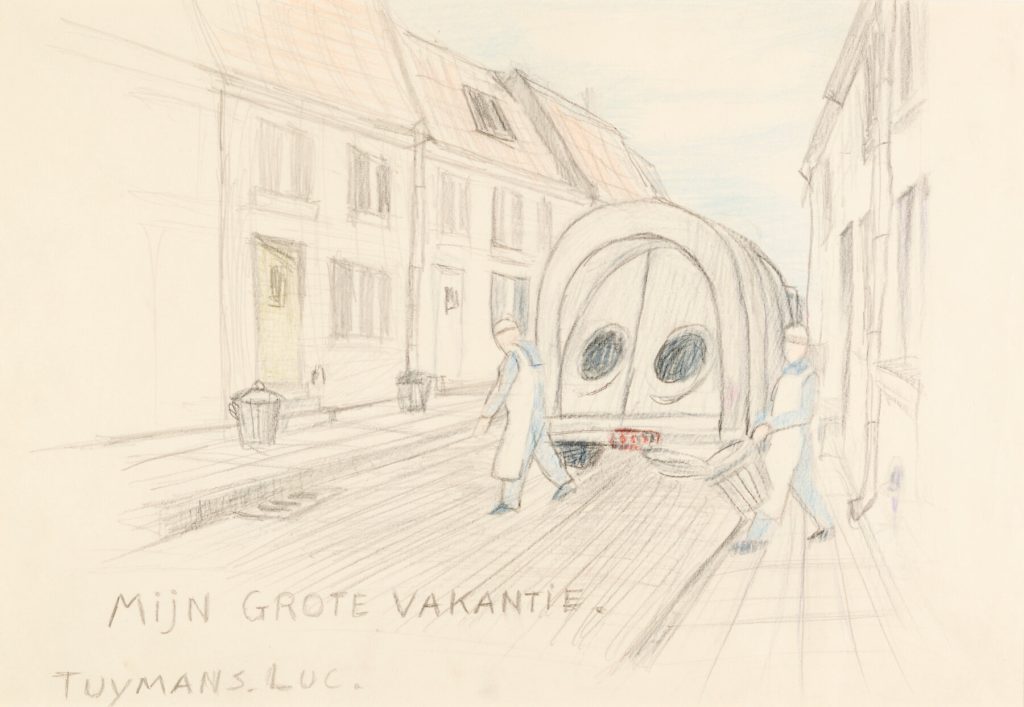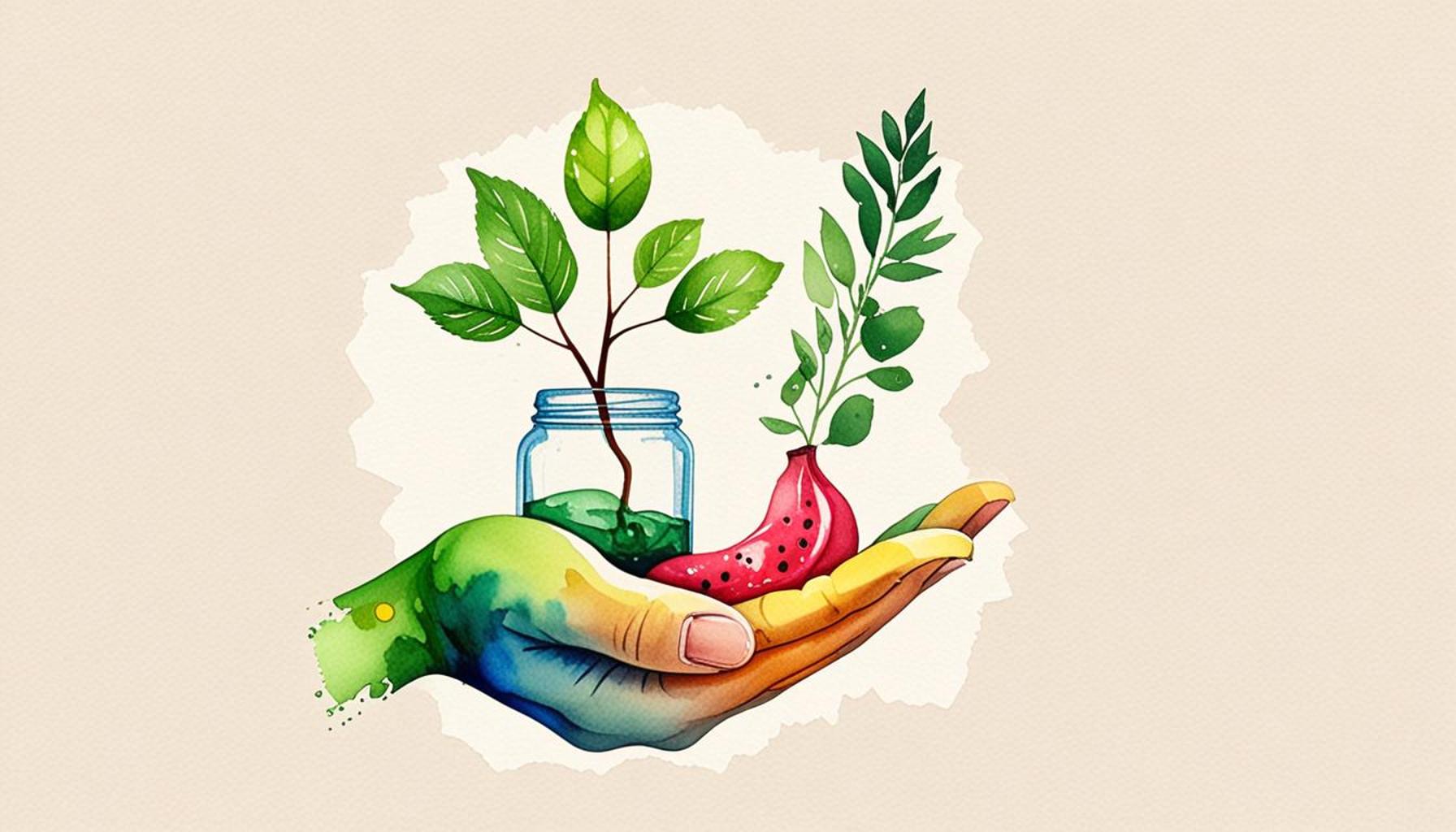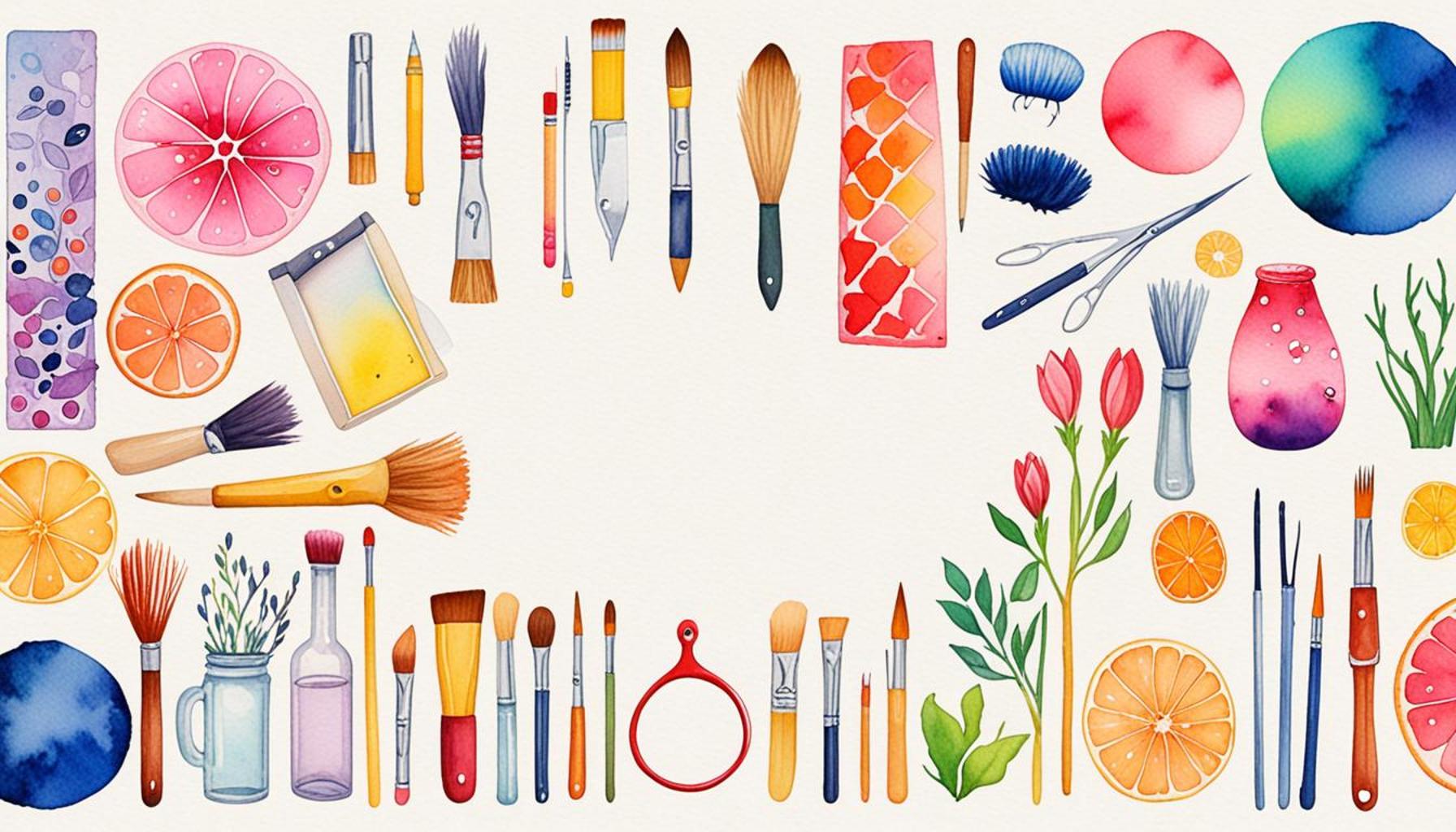The Influence of Simple Aesthetics on Creativity: Less is More in Artistic Production

The Power of Minimalism in Artistic Expression
In a fast-paced world, where our senses are constantly bombarded by visual and auditory stimuli, the allure of simplicity stands out as a beacon for creativity. The minimalist approach is gaining traction as a transformative method that often yields more profound artistic expression. By consciously removing distractions and focusing on the essential elements, artists and designers are able to delve deeper into their creative visions, giving rise to works that resonate on an emotional level.
This trend towards minimalism can be observed across a variety of artistic fields, each illustrating the potent effectiveness of simplicity. For instance, in the realm of visual arts, celebrated artist Ellsworth Kelly harnesses bold colors and geometric forms to communicate intricate ideas. His iconic color blocks not only capture the viewer’s attention but also provoke thought regarding perception, emotion, and the relationship between colors and space.
In architecture, firms like Johnson Finale are revolutionizing the way we experience built environments. Their designs emphasize clean lines and open spaces, fostering a sense of tranquility and inviting individuals to engage with their surroundings in a more meaningful way. This minimalist architecture is not merely about aesthetic appeal; it serves a functional purpose by enhancing psychological well-being, providing a sanctuary in an increasingly chaotic world.
Graphic design also greatly benefits from minimalism, as evidenced by the works of master designer Massimo Vignelli. His philosophy centers on achieving clarity through simplicity, often stripping away ornate details to enhance communication. Vignelli’s iconic subway map for the New York City transit system is a prime example, where a clear, visually simple design provides essential information without unnecessary distractions. This focus on straightforwardness allows for a more effective dissemination of ideas.
Research supports the assertion that simple aesthetics have the potential to spark innovation. Psychological studies indicate that environments characterized by simplicity can stimulate creative thought and foster a mindset open to new ideas. Artists frequently report feeling liberated when their work eschews complexity, which in turn enables them to explore uncharted territories in their creative process. This dynamic relationship between simplicity and creativity cultivates a thriving cycle of artistic production.

As we examine the compelling intersection of less is more and the evolving landscape of art, we invite you to consider how this principle reshapes not just artistic endeavors but also the way we perceive and interact with creative works. Join us as we explore further examples and expert insights that illuminate the transformative potential of minimalism in today’s artistic realms.
DISCOVER MORE: Click here to simplify your online life
Minimalism: A Catalyst for Innovative Thinking
The minimalist philosophy has transcended mere aesthetics to become a fundamental approach that nurturing creativity across various art forms. This method encourages artists to strip away excess, enabling a focus on core concepts, which ultimately enhances the potency of their work. One of the most striking aspects of minimalism is how it fosters a sense of clarity and purpose, both in the creation and reception of art.
Consider the world of music. Contemporary composers such as Philip Glass and Steve Reich utilize minimalist techniques, crafting compositions that hinge on repetition and subtle variations. This approach not only captivates the listener’s attention but also paves the way for an emotional landscape that pulses with dynamic energy. As these artists leverage repetition and simplicity, they cultivate an environment where listeners can engage with the core themes of their work, often leading to deeper interpretations and connections.
Within the literary arts, authors like Ernest Hemingway exemplify the power of simplicity in storytelling. Hemingway’s succinct prose, often referred to as the “Iceberg Theory,” allows readers to delve beneath the surface of his narratives, extracting complex emotions from seemingly straightforward sentences. His minimalist style has inspired countless writers to prioritize brevity and clarity, challenging them to convey profound ideas through the judicious use of language.
The Benefits of Simplicity in Creative Processes
Adopting a minimalist approach in artistic production offers several advantages that can enhance creativity:
- Increased Focus: By removing distractions, artists can channel their energy into honing their core ideas, leading to greater depth and nuance in their work.
- Enhanced Emotional Impact: Simplicity often creates a more visceral connection with the audience, as stripped-down forms can resonate deeply and evoke strong feelings.
- Encouragement of Experimentation: With less clutter to manage, artists feel freer to explore uncharted territories in their creative practice, encouraging innovation and unique perspectives.
- Clarity of Message: Simplified aesthetics allow artists to convey their messages more effectively, ensuring that core themes resonate clearly without unnecessary clutter.
Research consistently backs the effectiveness of minimalism in fostering innovation. Studies conducted at institutions like Stanford University have shown that minimalistic environments can enhance cognitive clarity, enabling individuals to think more creatively. Furthermore, participants in various studies reported feeling more inspired and liberated when surrounded by simple, uncluttered designs, catalyzing a surge in innovative thinking. This synergy between an individual’s environment and their creative outputs formulates a compelling argument for integrating simplicity into artistic production.
As the realms of art, music, literature, and design continue to embrace minimalism, it is clear that the influence of simple aesthetics is far-reaching. The implications extend beyond individual disciplines, reinforcing the notion that sometimes, less truly is more. In the next section, we will delve deeper into how these minimalist principles are being applied in various artistic fields, and how they invite both creators and audiences to experience art anew.
| Category | Description |
|---|---|
| Visual Clarity | Simple designs eliminate distractions, enhancing focus. |
| Enhanced Creativity | Minimalism allows artists to explore deeper concepts without visual clutter. |
| Emotional Connection | Simplicity can evoke stronger feelings, allowing audiences to relate more. |
| Accessibility | Simple aesthetics democratize art, making it approachable for everyone. |
As artistic production evolves, the fundamental question often arises: how does simplicity lead to greater depth and engagement in creativity? The notion of less is more pushes artists to streamline their work, therefore enhancing its visual clarity. By removing unnecessary elements, they forge a connection that allows viewers to focus on the essence rather than an overload of details. This approach not only encourages a deeper exploration of themes but also generates an emotional resonance. Audiences often find themselves relating to the stripped-down narratives presented by minimalist artists. Furthermore, this shift towards simpler aesthetics has made art more accessible, inviting broader demographics to engage with its profound messages.Artistic platforms and exhibitions now embrace this philosophy, showcasing works that prioritize minimalism, challenging both traditional techniques and expectations. It opens a dialogue on how simplicity can serve as a powerful tool to enhance artistic creativity and production.
DISCOVER MORE: Click here to learn how to involve your family in decluttering
The Power of Visual Minimalism in Creative Expression
Visual minimalism, a branch of the broader minimalist movement, has significantly shaped various artistic disciplines. This approach emphasizes the elimination of unnecessary elements, guiding both creators and audiences to focus on fundamental shapes, colors, and textures. The impact of visual minimalism can be seen vividly in contemporary graphic design and architecture, where simplification leads to powerful forms of communication and expression.
In graphic design, brands like Apple have capitalized on minimalist aesthetics to establish their identity. Their clean, simple designs communicate sophistication and innovation while allowing consumers to perceive the products in their purest form. Research by the Design Management Institute indicates that companies with strong design leadership, often characterized by minimalist approaches, outperform their competitors on the S&P Index, reinforcing the idea that less clutter leads to greater impact and connection with customers.
In the realm of architecture, renowned architects such as Tadao Ando and John Pawson exemplify the power of simplicity. Their structures often feature raw materials and unembellished forms, promoting a sense of tranquility and reflection. In a world increasingly overwhelmed by fast-paced living, these spaces invite individuals to pause and appreciate the subtleties of their surroundings. A study published in the Journal of Environmental Psychology found that individuals exposed to minimalist environments experienced lower stress levels and increased creativity, highlighting the significant mental benefits tied to these aesthetic choices.
Exploration of Negative Space in Artistic Practices
Another crucial aspect of minimalism is the concept of negative space, which is the area surrounding focal elements in an artwork. This technique encourages artists to consider voids and emptiness as integral components of their creative expressions. The contemporary paintings of artists such as Kazimir Malevich and Ellsworth Kelly demonstrate how a strategic use of negative space can heighten emotional responses and provoke thought.
Furthermore, in photography, iconic images by artists like Hiroshi Sugimoto and Ansel Adams exemplify this principle. Their use of negative space not only highlights their subjects but also invites viewers to interpret the narrative within the void. The elegance of minimal compositions fosters a dialogue between what is seen and what is left unsaid, prompting audiences to engage more deeply with the work.
Moreover, the digital art world has embraced minimalism as a potent tool for connecting with audiences. Initiatives such as the #MinimalismChallenge on social media platforms encourage artists to produce works that reflect simplicity while sparking dialogue around the importance of focusing on essential themes. This digital trend emphasizes that minimalism is not just a style but a communicative strategy that resonates within contemporary culture.
Across these various fields, the influence of simple aesthetics underscores a universal truth: sparseness often paves the way for greater creativity. As artists continue to redefine their practices through minimalist principles, they reaffirm that the essence of their work thrives in simplicity, resonating with audiences in profound and unexpected ways. The journey of minimalism is just beginning, offering a rich avenue for exploration in the world of artistic production.
DISCOVER MORE: Click here to dive deeper
Final Thoughts on the Role of Simplicity in Creativity
In conclusion, the exploration of simple aesthetics reveals a compelling relationship between minimalism and enhanced creativity across various artistic disciplines. By stripping away the superfluous, artists can focus on the essence of their work, allowing both creators and viewers to forge deeper connections with the art. From the strategic use of negative space in contemporary painting to the calming architectural designs of minimalists, the power of simplicity stimulates not only emotional responses but also promotes mental clarity and well-being.
The evidence suggests that, in a world cluttered with distractions, embracing minimalism can lead to profound insights and greater innovation. As individuals increasingly seek respite from the chaos of modern life, the allure of simple aesthetics grows stronger, prompting a reevaluation of how we approach artistic production. This trend is reflected in the rise of movements like the #MinimalismChallenge, which underscores a community of artists committed to expressing their ideas through simplicity.
Ultimately, understanding the influence of simple aesthetics on creativity provides a rich framework for future exploration. By recognizing the profound impact of minimalist principles, artists, designers, and creators can harness these insights to foster new forms of expression that resonate strongly in today’s fast-paced society. As we continue to delve into the narratives that silence speaks, we may find that the most striking messages often reside in what is intentionally left unsaid.


